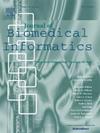基于多视图异构图对比学习的药物-靶标相互作用预测。
IF 4.5
2区 医学
Q2 COMPUTER SCIENCE, INTERDISCIPLINARY APPLICATIONS
引用次数: 0
摘要
药物-靶标相互作用(DTI)预测通过识别药物与靶标之间的新相互作用,在加速药物发现和开发中起着关键作用。以往对药物-蛋白对(Drug-Protein Pair, DPP)网络的研究主要集中在其拓扑结构的学习上。然而,仍然存在两个关键挑战:拓扑和语义信息的集成往往不足,并且在图卷积操作中可能会减少表示多样性,从而影响学习特征的表达性。为了解决上述挑战,我们提出了一种新的范式,称为基于多视图的异构图对比学习药物-靶标相互作用预测(HGCML-DTI)。具体来说,我们首先建立了一个药物-蛋白质异质图,然后使用加权图卷积网络(GCN)来推导药物和蛋白质节点的向量表示。随后,我们分别构建了DPP的拓扑图和语义图,并将它们整合成一个统一的公共图。采用多通道图神经网络学习DPP表示。为了保持表征多样性和增强识别能力,引入了一种多视角对比学习策略。然后,利用多层感知器(MLP)神经网络对DTI进行识别。为了证明这项工作的有效性,在六个真实世界的数据集上进行了广泛的实验,并与七个竞争基线进行了比较。结果表明,提出的HGCML-DTI显著优于最先进的方法。这项工作强调了将多视图学习和对比策略相结合对推进DTI预测领域的重要性。源代码可从https://github.com/7A13/HGCML-DTI获得。本文章由计算机程序翻译,如有差异,请以英文原文为准。

Multi-view based heterogeneous graph contrastive learning for drug–target interaction prediction
Drug–Target Interaction (DTI) prediction plays a pivotal role in accelerating drug discovery and development by identifying novel interactions between drugs and targets. Most previous studies on Drug–Protein Pair (DPP) networks have primarily focused on learning their topological structures. However, two key challenges remain: the integration of topological and semantic information is often insufficient, and the representation diversity may be diminished during graph convolution operations, affecting the expressiveness of learned features. To address the above challenges, we propose a novel paradigm named Multi-view Based Heterogeneous Graph Contrastive Learning for Drug–Target Interaction Prediction (HGCML-DTI). Specifically, we initially establish a drug–protein heterogeneous graph, followed by employing a weighted Graph Convolutional Network (GCN) to derive vector representations for both drug and protein nodes. Subsequently, we individually construct the topology and semantic graphs for DPP and integrate them to form a unified public graph. A multi-channel graph neural network is employed to learn DPP representations. To preserve representation diversity and enhance discriminative ability, a multi-view contrastive learning strategy is introduced. Then, a Multilayer Perceptron (MLP) neural network is used to recognize DTI. To prove the effectiveness of this work, extensive experiments are conducted on six real-world datasets, and comparisons are made with seven competitive baselines. The results demonstrate that the proposed HGCML-DTI significantly outperforms state-of-the-art methods. This work highlights the importance of combining multi-view learning and contrastive strategies to advance the field of DTI prediction. Source codes are available at https://github.com/7A13/HGCML-DTI.
求助全文
通过发布文献求助,成功后即可免费获取论文全文。
去求助
来源期刊

Journal of Biomedical Informatics
医学-计算机:跨学科应用
CiteScore
8.90
自引率
6.70%
发文量
243
审稿时长
32 days
期刊介绍:
The Journal of Biomedical Informatics reflects a commitment to high-quality original research papers, reviews, and commentaries in the area of biomedical informatics methodology. Although we publish articles motivated by applications in the biomedical sciences (for example, clinical medicine, health care, population health, and translational bioinformatics), the journal emphasizes reports of new methodologies and techniques that have general applicability and that form the basis for the evolving science of biomedical informatics. Articles on medical devices; evaluations of implemented systems (including clinical trials of information technologies); or papers that provide insight into a biological process, a specific disease, or treatment options would generally be more suitable for publication in other venues. Papers on applications of signal processing and image analysis are often more suitable for biomedical engineering journals or other informatics journals, although we do publish papers that emphasize the information management and knowledge representation/modeling issues that arise in the storage and use of biological signals and images. System descriptions are welcome if they illustrate and substantiate the underlying methodology that is the principal focus of the report and an effort is made to address the generalizability and/or range of application of that methodology. Note also that, given the international nature of JBI, papers that deal with specific languages other than English, or with country-specific health systems or approaches, are acceptable for JBI only if they offer generalizable lessons that are relevant to the broad JBI readership, regardless of their country, language, culture, or health system.
 求助内容:
求助内容: 应助结果提醒方式:
应助结果提醒方式:


